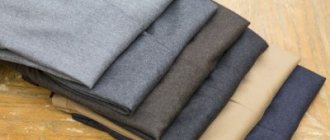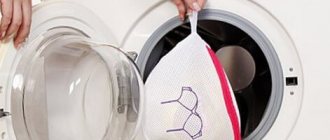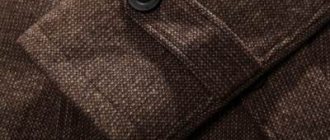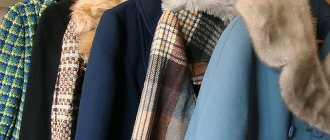Washing a coat is a delicate topic and is surrounded by many misconceptions. When purchasing a much-needed item for your wardrobe, you have to face the fact that it requires special care. Unlike a jacket or down jacket, this item of outerwear requires more delicate handling.
Preserving the original shape, preventing damage to the texture and loss of color are the main tasks. Having a coat in your everyday wear, you need to know about the intricacies of handling it in advance. Then operation will become easier, and the clothes themselves will last longer and will delight you for more than one season.
Is it possible to wash a coat at home?
Unforeseen circumstances under which the product could get dirty lead one to think about whether the coat can be washed in a washing machine. After all, it is not always possible to take an item to the dry cleaner and wait for the agreed time. Considering that outerwear can be made from different materials, not every item can be washed in this way. And those that survive cleaning at home can still suffer if they are handled incorrectly. Washing mode, drying conditions and local removal of contaminants can all cause damage to the entire product.
How to prepare a coat for machine washing
First you need to generally understand whether the item can be washed. A tag with special icons will help here, indicating how to clean the product: different fabrics are washed in different ways. Crossed out images of a washing machine or basin prohibit washing. Suitable for dry cleaning only.
If washing is allowed, then you need to prepare for the process. Before loading into the machine, you must follow these rules:
- empty your pockets;
- buttons, locks, buttons to fasten;
- Remove metal parts and decorations (otherwise rust may appear);
- unfasten the fur, otherwise it will fall off;
- Turn the coat inside out.
How to choose the right detergents
Understanding how to wash a coat at home will save you resources of time and effort, not to mention the clothes themselves. Not every powder is suitable for washing wool products: carefully read the label on the detergent. The manufacturer must indicate if the powder is not suitable for wool. Silk is also taken into account, as it is often used as a lining material.
Powdered detergents are not recommended for washing such a delicate item. The particles may not dissolve enough in the water, become clogged with the fibers and, as a result, the clothes will remain unwashed. It is better to choose special liquid detergents such as gels, as well as baby liquid detergents. They do not contain aggressive components that can harm the fabric.
If this situation is optimal for products made from non-natural materials, then the method of how to wash a cashmere coat is somewhat different. Machine wash is absolutely not suitable for such items. Regardless of the thickness of the cashmere thread and its quality, this material is quite finicky: it often shrinks and becomes covered with pellets. It will be impossible to avoid them even with hand washing in a washing machine.
Alternative cleaning methods
Sometimes it is impossible to wash a coat by hand or in a machine due to the high probability of damaging the product. In this case, you need to purchase a special clothes brush that will remove most surface contaminants. And if a small stain appears on the fabric, you can use one of the spot dirt removal techniques. To do this, they use special cleaning products that allow you not to soak the entire thing, but to clean a specific area. But in this case, there are two points that you need to pay special attention to:
- Choice of product – it should be for delicate fabrics and not contain a large number of aggressive additives.
- The general condition of the coat - if the item has not been thoroughly cleaned for a long time, the fabric at the site of the removed stain will be very different in color.
For light coats in such cases, it is best to use dry cleaning services.
Proper washing will not only clean your outerwear, but also preserve its appearance for a long time. Therefore, you should not save money on a special product and time on labor-intensive drying. The more effort you put into following the recommendations, the less likely it is to ruin an expensive coat.
Pre-cleaning
Before washing your coat in an automatic washing machine, carefully read the label. If the product is handmade, such instructions are stamped on the back on the inside or placed in a pocket. Before washing, it would be better to pre-clean the coat of dirt by hand or using equipment. Dust, surface stains, particles of earth or sand - all this can be removed before the main process.
If there is no special brush or roller, then for gentle preliminary cleaning you can use a dish sponge with a rough coating on one of the surfaces - you can first rub the product dry and then wet.
It is best to take a brush with medium-hard bristles and comb the product along the seams. The best way to remove pet hair is with a roller with adhesive tape or a rubber glove moistened with water. You should not apply too much pressure over the clothing, do not stretch the fabric, but wipe it carefully. It is best to do this on a horizontal surface so as not to deform the product, as would happen if it were hung on a hanger.
Preparation for the procedure
When the manufacturer indicates on the tag that washing is acceptable, you can get down to business. First of all, you need to determine how to wash it - in a washing machine or by hand.
When choosing, you should keep in mind that hand washing is always more delicate than washing in a washing machine, in which the fabric is subject to more wear and tear.
To prepare a product for washing, you should:
remove all items from pockets;- fasten all buttons, zippers, snaps and other fasteners.
- unfasten or flog existing fur;
- if present, also remove the removable hood and lining so that small areas in the fastening areas do not remain contaminated;
- Remove existing stains first using stain remover or suitable detergents, choosing them according to the type of fabric.
Stains from coffee, tea and red wine can be removed using this mixture: 1 tbsp. mix a spoonful of glycerin with 1 tbsp. spoon of ammonia.
Apply the solution to the contaminated area with a cotton swab and leave for 7-10 minutes, then rinse thoroughly with water.
General washing rules
A common misconception is that coats made from delicate cashmere cannot be washed at home. Any item of clothing in your wardrobe can and should be maintained in proper form. This should be done regularly and as often as possible. Dry cleaning will no longer be able to satisfy this need - frequent exposure to this cleaning method will harm not only the material, but also your health. Just like cashmere, you can wash a drape coat or any other.
Of course, each texture has its own characteristics, but for all materials it is worth remembering a few simple basic rules. The water temperature is always desirable no more than forty degrees, and sometimes no more than thirty. The label will tell you the individual needs of your item, but the spin mode will also be important for any item. Do not twist the fabric, only squeeze it gently. If this is a machine procedure, then the spin is minimal, otherwise the coat will lose its shape.
Outerwear can be washed locally and completely. If you are only concerned about the collar and sleeves, then you don't have to wash the entire garment. And to ensure that there are no streaks left at the joint, the detergent solution should not be made too concentrated. A soft brush, in some cases even a toothbrush, will work for removing small, simple stains. The above-mentioned sponge will also carefully cope with this task without compromising on efficiency.
Polyester coat
Polyester is a material that is preferably dry cleaned. This is because excessively hot water or improper drying can cause the fabric to become deformed and brittle.
But if you follow certain washing rules, this situation can be avoided:
- drying of the product should only be done on a hanger;
- the water temperature during washing should be in the range of 30-40 degrees;
- you need to turn off the spin mode, otherwise creases will form on the coat that will be almost impossible to iron out;
- washing is done in a gentle mode;
- liquid detergents are used.
How to wash different materials
Different textures require different approaches to the cleaning process. This is due to the properties of the threads, the way they are weaved and the presence of synthetics. A small percentage of synthetic fibers in a natural product provides less demanding care. Whatever the material, it is always worth checking it first for shedding. Rinsing the edge of the product under warm running water will be enough to check the degree of color washability.
The way we are used to washing ordinary things, washing a woolen coat is strictly prohibited. Below we will consider the features of its washing.
Woolen
The only detergent you can use is wool powder. If the product is 100% wool, water temperatures above thirty degrees are unacceptable. A woolen coat should not be wrung out; it should be hung on a hanger to allow water to drain. How to directly wash a wool coat, by hand or in a machine, is up to you. Many models have a “hand wash” or “wool” mode, thanks to which the item will not lose its characteristics. Knowing basic techniques for handling fabrics, washing a woolen coat yourself is not at all difficult at home.
Cashmere
How to wash a cashmere coat, such a delicate material, is worth studying in more detail. Trial and error can put your clothes at risk, which are prone to shrinking and pilling in the wash. It is best to hand wash a cashmere coat, even at home. Machine washing on the most delicate cycle is still rougher than washing by hand. Is it possible to wash a cashmere coat locally? This is a predictable question. The answer is yes, but to avoid streaks, we do not make a very concentrated detergent solution.
A wool product, usually liquid, will cope with this task better than powder. It also rinses out of the product better. On light-colored outerwear, stains are visible, as well as on dark ones - in any case, it is better to minimize the risk. Washing by hand or with a dampened sponge will handle the cleansing delicately without deforming the texture of the clothes.
Now let's talk a little about the quality of cashmere. From the cheapest to “baby cashmere” and baby goat down, all types can become covered with pellets. The only difference is in the thickness and length of the pile - the thinner and longer it is, the higher its quality. If your product is middle class and beyond, take the time to go to the manufacturer’s website and read the recommendations for caring for their products. For example, cashmere from the Loro Piana brand is considered the most delicate; the manufacturer spoke in detail about the features of caring for products - from cashmere socks to coats and shoes.
Drape
You can wash a drape coat in the same way as a cashmere coat. At home, the requirements are the same, but only if the drape coat does not have glued parts. If they are, then it is better to clean the product locally, only in contaminated places. Is it possible to wash a drape coat in hot water? The answer is no. A temperature no higher than thirty degrees will protect clothes from shrinking.
Sintepon
How to wash a coat correctly depends, of course, on its material. Not every coat can be washed in a washing machine, as we saw above. But padding polyester is one of the most suitable for delicate conditions. Washing such a coat does not allow drying in a washing machine, otherwise the synthetic winterizer will lose all its properties. Detergents for wool and delicate fabrics will protect against stains. Bleach has a very detrimental effect on the padding polyester itself, so read the label of the detergent carefully - the presence or absence of chlorine bleach should be indicated by the manufacturer.
Made from camel hair
Is it possible to wash a wool coat at home? We found out that it is not difficult if you know the intricacies of handling this natural material. Camel wool is the most difficult of all types of wool to handle. Of course, doubts may arise whether it is then possible to wash a camel hair coat yourself. With proper preparation and knowledge, everything is as safe as possible for clothing. Everything that was mentioned for cashmere also works for camel hair. And after washing, horizontal drying on the fabric under the product is required.
Made from polyester
Polyester gets creases at high washing temperatures, which are almost impossible to smooth out. So washing a polyester coat in a washing machine should be done in the delicate mode and at a temperature no higher than forty degrees. Drying the product does not require any special complicated manipulations - just hang the clothes on a hanger or hangers and leave until the material is completely dry.
Made from holofiber
Washing a holofiber coat in a washing machine is easier than all the previous ones. Holofiber is a synthetic filler. It can be easily twisted, squeezed and dried. The wear resistance of this material is higher than that of natural down or wool, and it does not weigh down clothing. You also don’t have to worry about ticks in it, and its hypoallergenic properties make holofiber a universal and practical material.
You can wash such a holofiber coat in a washing machine at either thirty or sixty degrees. Any spin is suitable, since the filler does not roll off and does not lose its shape under such influence. To prevent a white item from losing its color properties, you can use powder or gel for black items, then the white coat will become snow-white.
How to dry it properly?
Automatic drying can only be used for coats made of polyester with down filling. Along with the product, you need to place laundry balls in the drum so that the fluff is evenly distributed in the cells. Dry for no longer than 1.5 hours at a temperature of +30 C.
It is recommended to dry models made from other fabrics in the following way:
prepare a suitable horizontal platform for drying and cover it with a soft, non-fading cloth;- lay out the product evenly, straightening out the creases and wait until the water drains;
- after abundant drainage of water, also transfer the coat horizontally onto a dry, thick cloth (a terry sheet or large towel will do), smoothing out all the details with your hands;
- choose the right place for drying - it should be a spacious, warm room with good ventilation (you cannot leave it in the bathroom, there the item will acquire a musty smell);
- when the coat becomes slightly damp, you can hang it on hangers and keep it away from heating devices;
- drying in the fresh air is allowed in warm weather up to +18 C (not allowed in hot weather), without direct exposure to sunlight;
- finish drying in time, if necessary, iron the item with a warm iron through gauze or thin fabric (the coat cannot be overdried, in this case the item is guaranteed to shrink and the material will lose its smoothness).
The coat should not be dried for a long time and in places with high humidity, otherwise the fibers of the fabric and sewing threads will begin to rot and rot, which will lead to damage to the product and an unpleasant smell.
Possible washing options
The coat necessarily requires not only professional care and cleaning, but also careful cleaning at home. To ensure that an item serves you for more than one season without losing its shape and color, there are several ways to make home care as safe and effective as possible. After studying the label, which necessarily indicates the possibility of hand washing or a ban on it, proceed directly to cleaning. In addition to wet cleaning, there are many other types of effects on fabric. And many of them won't hurt if done properly.
In the washing machine
Most of our items have been machine washed many times. A coat can be washed in a washing machine both in the delicate wash mode and in the normal mode - but it all depends on the type of material, its properties and reaction to various methods of exposure. Drape coats, cashmere outerwear, and many other delicate materials cannot be washed in a machine. If there are no other options or possibilities for washing, you can try placing the clothes in a special laundry bag. Such bags are used for underwear, they are usually small in size, so this method will not save a long coat. But a belt or removable clothing parts can be placed there.
Handwash
You can wash your coat properly by hand. Barely warm water, careful handling of materials and a well-chosen detergent guarantee both cleanliness and preservation of the product’s shape. It is not necessary to specially equip a place for this: you can do this in a basin or bathtub, depending on the size of your outerwear. In some cases it is more convenient to dry over a bathtub. Provide a place to hang washed items on a shower rack or shower curtain pipe. Please note that spinning is contraindicated for many fabrics, and the clothes will become noticeably heavier.
Horizontal drying raises many questions. After washing by hand, it is difficult to find a table or any other surface on which to place the item. A wooden table is not suitable, as moisture from the fabric can cause deformation of its surface. The glass surface is quite slippery; cover it with cotton cloth first. The floor is suitable only if people or pets will not walk past the coat; it is better to minimize the risk of repeated washing. An ironing board without a cover is one of the best options for horizontal drying.
Alternative cleaning methods
There are times when both hand and machine wash options are not possible. There are now more and more alternatives to them - technology has also affected the field of caring for things. You can resort to new methods of dealing with stains and dirt of any complexity. This can be done at home - we’ll tell you how to wash a cashmere coat using steam or environmentally friendly cleaning methods.
There are specialized steam cleaners. This processing method is ideal for delicate fabrics, which, in addition to cashmere and wool, include silk, satin, and chiffon. The impact of this method on materials is as safe as possible and does not cause their deformation or discoloration.
Organic cleaning is an alternative to dry cleaning and all similar cleaning methods. Its essence is that the solution with which the material is exposed contains only organic components, as well as liquid carbon dioxide. This method of cleansing will not cause allergies and will not harm the environment. It is completely non-toxic. As for the fabric, this effect is effective and safe for it.
Additional recommendations
To make your coat pleasing to the eye longer, you need to properly care for it after washing.
How to dry it properly
Drying a coat also requires a meticulous approach, because it is not enough to wash off the dirt; you need to consolidate the results obtained without harming the product in the final cycle.
Rules:
- Only natural drying without the use of hair dryers or electrical appliances.
- Exclusively horizontal position at the beginning of the process for both natural and artificial coats. When excess water has drained, natural products should be dried by constantly changing towels, and artificial ones should be hung on soft hangers and taken out to a ventilated room.
- When drying horizontally, it is necessary to check the fabric for creases and bends in order to minimize the possibility of ironing.
Any product must be completely dry after washing. Operating while wet may result in a musty odor.
How to pet
Ironing coats made from 100% natural fibers is only permissible under the influence of steam from an iron or steam generator. Mixed and faux coats can be ironed through a damp cloth.
Features of ironing some types of coats:
- Only on the inside - tweed, suede.
- In a slightly damp, but already noticeably dry state through gauze - wool, polyester.
The permitted temperature range is indicated on the label: range 110–200 °C. If the “iron” sign is crossed out, ironing is not allowed. If it does not have points inside, there are no temperature restrictions.
What to do if stains appear
Stains are the result of poor rinsing of detergent from fabric fibers or the use of detergent that is not suitable for the fabric.
For example, a coat made of camel hair is available for any wash, but allows the use of only liquid products. Neglecting this requirement will inevitably lead to divorce.
Unfortunately, the problem can only be solved by repeated rinsing in a large volume of water.
What to do if your coat cannot be washed
The following home methods can be alternatives to hand and machine washing if they are unavailable:
- cleaning with steam cleaners - ideal for delicate fabrics (cashmere, drape, silk, satin, chiffon);
- cleaning with environmental products containing organic components and carbon dioxide.
A coat made of textured bouclé fabric is exactly the case when home washing and cleaning is unacceptable. Dry cleaning only.
If you find it difficult to choose a product, have doubts or are afraid of ruining the fabric, then it is better to turn to professionals. Dry cleaning is available for all types of coats, including those that cannot be washed.
Drying and ironing after washing
After a wool coat or any other coat has been in the washing machine, it requires proper drying. Ironing of clothes is provided only if the folds have not straightened out during drying. Then you can use a steamer. An iron is recommended only when the washed item is first covered with cotton cloth. It is advisable to iron a barely damp product, then additional steam from the iron will not be needed.
Steamers come in different sizes and models - from bulky factory ones to hand-held ones suitable for home use and even travel. Things are usually simply placed on a hanger and a steamer is passed over the fabric in a vertical position. This method will protect the material from burning and bunching, as often happens when ironing.
Cleaning coats with other fillings
There are a number of other coat fillers, each providing different washing requirements:
- Down is a very warm filler that can be cleaned in an automatic washing machine and spun at low speeds. You can prevent the filling from clumping in certain parts of the coat by adding special balls to the drum of the machine. Drying down outerwear is carried out in the fresh air for a long time. Absolute drying can be achieved by regularly shaking the down.
- Polyester is a synthetic filler. Cleaning is carried out both manually and using a machine. In the latter case, you must follow all generally accepted rules.
- Elastane. As a rule, it acts as an additional element of various fillers; the coat contains about 4-5%. It is characterized by poor air permeability, is subject to electrification, but is quite durable. Washing is carried out at a temperature of no more than 30 degrees.
- Holofiber - has excellent characteristics, it can be washed in a machine. The presented material is even allowed to be machine pressed.
- Suede leather. Allowed to be washed both by hand and by machine. Water temperatures should be within 35 degrees. It is forbidden to wrinkle such a coat, because if it becomes wrinkled, serious difficulties will arise in smoothing it out.
Useful tips
Depending on what you are washing, the recommendations are different. But there is a general set of useful tips that will come in handy when cleaning any item from your wardrobe. For example, light stains on fabric are best removed with a soda solution, gently wiping them with a sponge. When washing, it is always advisable to fasten buttons, zippers, and empty pockets so that the item does not become deformed during processing and the presence of foreign objects.
It is better to organize subsequent storage of outerwear in special cases. Such covers can be transparent or colored, they are equipped with perforations and protect clothes from dust and moths. It’s better to hang things in the closet or fold them horizontally into compartments under the bed, depending on where and how you have storage.
It's best to avoid using synthetic insect repellents on your clothing. The natural material, as well as the smell of perfume and human sweat, attracts moths and other pests. Aromatic products with natural cedar extract will cope best with them. This option for protecting things from moths will not harm your health.
A coat is a must-have wardrobe item for any season and any style. Having undergone dramatic changes in shape and color throughout its history, it remains extremely popular to this day. Proper care and proper preparation for cleaning and storing it will save time and resources. With proper care, which you now know the most important thing about, outerwear will last for many years.
Cleaning products made from padding polyester
Sintepon is a fairly practical and wear-resistant material, the great advantage of which is that it can be washed in a washing machine. But when washing a padding coat, you also need to follow several rules:
- before washing, clothes must be inspected in detail for the presence of tears; if any are present, they must be sewn up; otherwise, you may end up with damaged fabric with filler residues;
- It is prohibited to soak or bleach items containing the described filler; stains can only be removed by washing with soap.
Drying such outerwear is carried out horizontally, so that the weight of the remaining water does not allow the filler to be knocked down.
What to do to prevent clothes from losing their shape and shrinking?
Regardless of the type of washing, it is important to adhere to a number of rules that apply to any coat materials. This will not only provide a good result, but will also preserve the original appearance of the clothes. When washing by hand, do not wrinkle or rub the fabric too much. It is better to use a soft brush and lay the coat on a flat surface. When using a washing machine, wash only in the delicate cycle.
Temperature
As a rule, the washing temperature is indicated on the product tag. In the case where there is no tag, there is a single rule - the water should be +30...+40°C.
Detergent
To ensure the safety of the fabric, it is important to choose the right washing powder. Targeted liquid products (for colored or white products, natural or synthetic) are best suited for such purposes.
There are even liquid detergents that are formulated specifically for designated fabrics.
Proper drying
Another important stage of washing a coat that requires knowledge is drying. To prevent outerwear from losing its original shape and shrinking after washing, it must be dried properly. Under no circumstances should you speed up the process using an automatic dryer, hair dryer or iron.
To ensure a positive result, you should use hangers of the appropriate size, on which the coat is hung, all folds and folds are straightened, buttons are fastened and left to dry away from direct sunlight and artificial heat sources.
It is better not to hang wool and cashmere coats, as they tend to stretch. Such products are spread on a flat surface covered with a terry towel. We also lay a fabric that absorbs moisture well on top. As the towels become damp, change them and leave the item to dry completely.
Preparatory stage
There are a number of basic recommendations on how to properly wash coats made from various fabrics. First, begin preparing the product for the cleaning procedure:
- Fur parts (cuffs and collar and hood with fur trim) are removed. If the manufacturers have not provided for this, you will have to carefully rip it off. Faux fur inserts do not need to be removed.
- Decorative elements and large metal parts must be removed so that the fabric is not damaged in the process.
- For delicate natural fabrics, you need to choose a special detergent, which is intended not only for washing, but also for softening and antistatic.
- It is necessary to carefully inspect the pockets. You should take all of them out.
- If there are specific stains (coffee, tea, grass, etc.), they must be treated with anti-stain products immediately before washing.
How to dry washed outerwear
We have already figured out how and what is the best way to wash a coat, but drying is an equally important step. In order to do everything flawlessly and not make mistakes, follow the practical tips described below:
- coats should be dried exclusively in a vertical position on soft hangers; other options are not recommended;
- Before drying, be sure to carefully straighten all dents and creases formed during washing;
- hang your coat in a well-ventilated area away from any heat sources, be it radiators or direct sunlight;
- If you are lucky and there is excellent clear weather outside, hang the product to dry on the balcony or, if possible, in the shade outside.
Most importantly, remember that ignoring recommendations for proper drying of the product can ruin the result of even the most delicate wash. It will be very difficult to restore your coat to its original shape. Therefore, do not neglect the rules in any case and follow all the instructions described above.
We hope that our article was useful to you and helped you keep your coat intact after wet cleaning.
Drying Features
The ideal drying option is on a mannequin. But who always has a mannequin in their house, and of the right size at that? Therefore, you will have to make do with a hanger. During drying, the product should not touch anything, be near heating devices or in a stream of directed hot air. The hanger should imitate the shape of a shoulder, that is, thin wire hangers will not work; you need ones with wide hangers.
If it’s really hard to find hangers and drying space in a vertical position, then you can get by with a horizontal surface. It should be smooth and uniform, and the coat should be laid out according to the shape. Drying clothes is not suitable, the ropes will leave marks, which will then be very difficult to remove without re-washing. The backing should be white and clean, and changed every time it gets wet. Therefore, it is better to leave the drainage after washing your coat in the bathroom. The product must be turned over every two hours.











